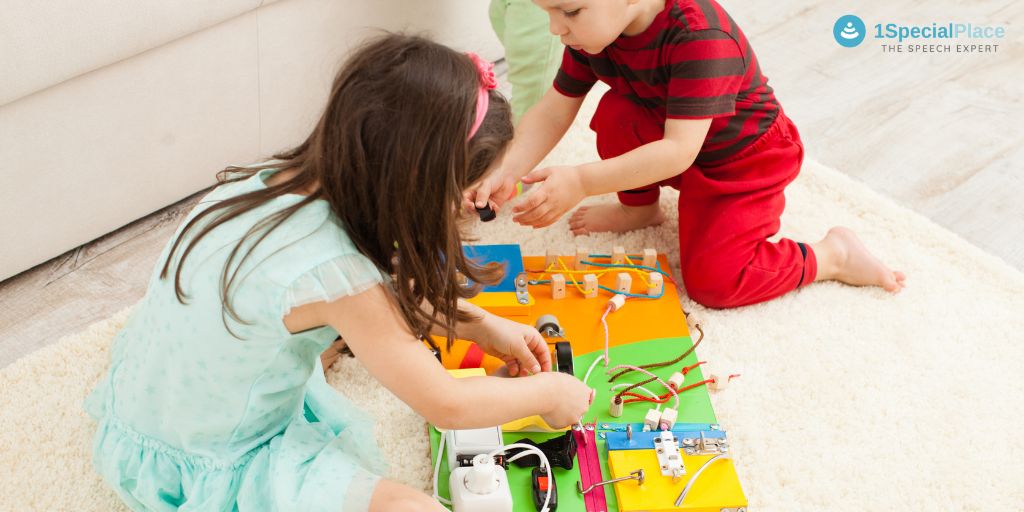
How Sensory Activities Promote Speech and Language Development
How Sensory Activities Promote Speech and Language Development
Speech and Language Development, Sensory exploration stimulates all senses at the same time. These experiences can include touch, hearing, seeing, tasting, smelling, equilibrium and pressure ( tactile, audition, visual, gustatory, olfactory, vestibular and proprioception are more formal terms).
And all these senses together boost many areas of development in a child.Using a variety of senses at once allows children to develop language, cognitive, motor, social and imaginative skills. It’s interesting to note that Sensory exploration has a huge impact on language and speaking domains of child development.
Sensory Items to include in your play –
- Oats
- Rice/Wheat Grains
- Water
- Shaving Cream/Foam
- Dry beans/lentils
- Uncooked noodles
- Hair gel
- Food colouring
- Sand
- Oil
- Food Coluring
- Aloe Vera Gel
- Body Wash
- Water beads
- Finger Paint
Small items that you can use inside the sensory bins/bags –
- Numbers
- Letters
- Shapes
- People/animal figurines
- Vehicles
- Pom noms
- Glitter
- Confetti
- Drinking straws
Following are the areas of Langauge development which can be worked upon when a child indulges in Sensory play.
RECEPTIVE LANGUAGE SKILLS
Receptive language forms the core of language development. This includes the ability of a child to understand the spoken language, the gestures and the rules of a language. It involves how well a child can identify objects around him, his skill to follow commands and comprehend questions. Sensory activities like playing with play dough, water, slime, coloured rice/wheat/pasta, various textured toys/books, stones, buttons, shaving foam, bubble wrap, flour etc can all be perfect opportunities to work on giving commands, introducing new vocabulary, expanding language concepts like adjectives, action verbs, prepositions, plurals etc, asking questions and a lot more.
Command /Direction Following –
- ‘Pick up the play dough’
- ‘First, pinch the dough and then give it to me’
- ‘Splash the water twice and then fill it in a cup’
- ‘Stretch the slime’ ‘ Smell the slime’
- ‘Dab orange colour in the pasta’,
- ‘Fill wheat grains in your hands
- ‘Touch the fleecy sheep in the book’
- ‘Bang two pebbles together’
- ‘Make a circle in the flour paste’
- ‘Add yellow colour to the foam’
- ‘Pop the bubble wrap’
Expanding Language ( concepts like adjectives, prepositions, action verbs, plurals etc. )
- ‘Punch the playdough’.
- ‘Roll the playdough’
- ‘Mix the green playdough with the yellow one!’
- ‘Put the pink playdough on top of the yellow one’
- ‘Take the slime out of the box’
- ‘Sprinkle chickpeas on the table’
- ‘Lets colour a bowl of rice with blue food colour’
- ‘Roll the squishy ball’
- ‘Pick the biggest button’
- ‘Find the hidden pieces of rock in the heap of grass’
- ‘Spray some shaving foam’
- ‘Spray lot of foam’
- Stand on the bubble wrap’
- ‘Tear the bubble wrap with the pen’
Asking Questions
- ‘Do you want to mix it?’
- ‘Are you being careful while pouring?’
- ‘How does it feel?’ This feels (slimy, smooth, cold, etc.) to me.’
- ‘Have you ever felt anything else like this?’
- ‘Does it remind you of anything?’
- ‘Which spoon shall we use to stir’
- ‘What is the colour of the slime?’
- ‘Which is the bumpy block’,
- ‘Can you hear the crinkly toy?’
- ‘Where are the buttons hiding in the box?’
- ‘Who wants to get messy with bubbles?’
Inferencing
- ‘If we mix yellow to blue, what will we get?’
- ‘If your hands are sticky with dough, what will you do?’
- ‘Water play is messy, shall we pour it in a rush or carefully?’
- ‘Can we blow bubbles in a bubble wrap?’
- ‘Should you use a spoon or pebble to stir?’
EXPRESSIVE LANGUAGE SKILLS:
Expressive language includes the words we speak, the gestures we make and how we convey our ideas. Most parents are worried about this part of their child’s language development. The expressive language which includes ‘speaking’ or using signs/mands or visual aids to communicate is a reflection of the receptive language skills of a child. Using sensory play you can build new vocabulary, Yes/No responses, sentence formation, conversation skills, clarity of speech ( Articulation), speech fluency. Here are some ideas to initiate oral language and verbal expression
Introducing new Vocabulary– Here are some fun descriptive words that you can teach your child
- Tactile/ Touch: squishy, bumpy, smooth, sticky, gooey, cold, slimy, yucky, foamy, sudsy, bubbly, rocky, nice, soft, hard, rough, ridgy, wrinkly etc
- Auditory/ Hearing: loud, soft, sweet, bearable, whimper, whisper, shrieky, shrilly, unbearable, scratchy, hoarse, sharp, bass, boom, hollow, crinkly etc.
- Visual/ Seeing: bright, shiny, colourful, dull, beautiful, ugly, tall, short, big, small, bold, clear, striking, transparent, opaque, dark etc.
- Olfactory/ Smell: odour, aroma, fragrance, fruity, smelly, pleasant, unpleasant, nice, bad, fishy, flowery, woody, etc
- Gustatory/ Taste: sweet, bitter, salty, sour, spicy, sharp, insipid, flat, yummy, tasty etc.
- Equilibrium/ Vestibular: dizzy, faint, weak, spinny, swingy, wobbly, bumpy, jumpy, to & fro, up & down, back & front etc.
- Proprioceptive/ Pressure: deep, shallow, more, less, hard, soft etc.
Sentence Formation – Forming longer sentences shows to communicate shows greater mastery over the language learned. There are various ways in which you can use sensory activities to promote this aspect. Some examples :
-
Correct Modelling :
- Child – ‘Want slime’
- You should model – ‘You want to play with slime.’
-
Request – Response Transfer
- You – ‘What do you want?’
- Child – ‘Slime’
- You – ‘Which slime do you want?’
- Child – ‘Glitter slime’
-
Build Response combinations
- You – ‘What are you doing?’
- Child – ‘splashing ‘
- You – ‘What are you splashing?’
- Child – ‘Splashing water’
- You – ‘Is it fun splashing water?’
- Child – ‘Yes its fun splashing water’
- You – ‘Yay do you want toys while splashing water?’
- Child – ‘Yes I want toys while splashing water’
Pretend Play – Pretend play can really improve your child’s expressive language skills. Combining it with sensory activities can be loads of fun too! Some examples –
- Pretend your hand to be a fish in the blue water. Talk about how cold the water is, how small the fish is..name the fish.
- Roll a toy phone from playdough. Call someone and pretend to talk. Take turns with your child.
- String buttons to form a necklace and pretend to wear it, talk about it and admire it.
- Make a pretend rainbow with coloured pasta/rice/cotton balls. Talk about the colours of the rainbow.
- Animal Hunt in water beads. Place with water beads in a big tray. Hide plastic animal figurines inside. Take turns to pull out the animals and speak out the animal cry/name of the animal. Talk about what the animal will eat and where he sleeps.
- Make Mud Soup. Go out in the Garden, mix mud with water, get messy, take pots and pans and some cups. Encourage your child to make some soup, serve and enjoy!
Articulation Practice with Sensory Activities
Rehearsing and learning how to speak sounds clearly can be a daunting task for children. It needs a lot of motivation for most. Sensory activities can really help in introducing a fun playful way to work on the difficult to speak letters/speech sounds. Some examples –
- Speech Sound Search -Hide the Target letter ( r , l, k , p etc..) inside a tray of styrofoam balls/water beads/buttons/rice. Ask your child to hunt for the letter and speak it out every time he finds it. Once he is able to utter the letter, you can make the task challenging by asking him to speak out a word with that letter ( rabbit, lion, kettle, peacock etc)
- Aromatic Articulation cards: Make simple Target word flashcards at home. Spray some vanilla essence or any scented oil on each. Stack them all in a box/bag. Pull them out one by one, let your child smell them and speak out the target sound/word
- Listen to the sound: Ask your child to close his eyes/blindfold him. Speak out various letters and ask him to listen and repeat.
Fluency Shaping with Sensory Activities
Speaking fluently without bumps can be practised using sensory games. Simple strategies like slow rate of speech, monitoring your rate, getting visual feedback and achieving naturalness in speech work well. Some examples –
-
Car Ride in Shaving Foam:
Squirt out some shaving foam in a big tray or on top of a table. Pull out a toy car and encourage your child to race it through the foam in a smooth manner. Alongside you can ask him questions. While answering those, your child must smoothly race the car too. If he gets stuck or repeats any word or prolongs any syllables he must do the same with the car too. The game is to keep the answers smooth with a smooth car ride.
-
Truck Ride in Sand:
Replace Shaving foam with sand and car with truck in the above example
-
Frog and Lilly Pad in a pond:
This is a very famous game for enhancing your child’s speech fluency. But you can add a sensory touch to it. Take a big deep tray, cut out foam Lilly Pads and pull out a toy frog. Ask your child simple questions or ask him to narrate a story. Every time your child speaks a word he must hop from one Lilly pad to another. If he gets stuck or prolongs a word, the frog falls in the water and the child has to do the whole activity all over again.
I hope you will find the above list of examples useful for your child who is learning to talk.
If you wish to know more about Speech Therapy, kindly contact us at info@1specialplace.com
For more ideas check out our other related blogs
View this post on Instagram
- Addressing the Silent Struggle in Special Needs Children - December 22, 2023
- Swallowing Difficulties: A Comprehensive Guide - December 12, 2023
- 6 Simple Steps to Enhance Speech Clarity and Connect with Confidence - November 3, 2023


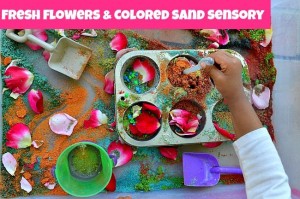
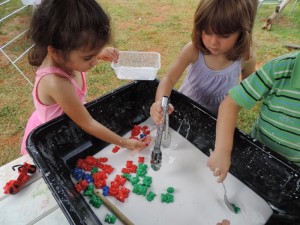
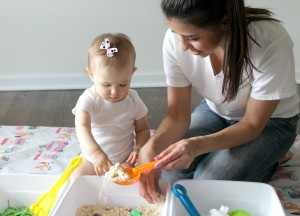
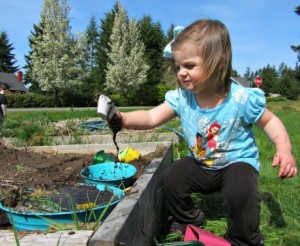
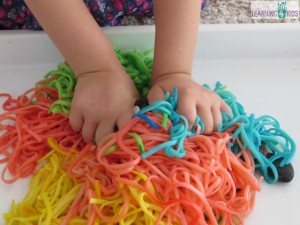
Leave a Comment
(2 Comments)
Grateful for the ideas
Thanks Reginah! Glad that you found these ideas useful.
Categories
Recent Posts